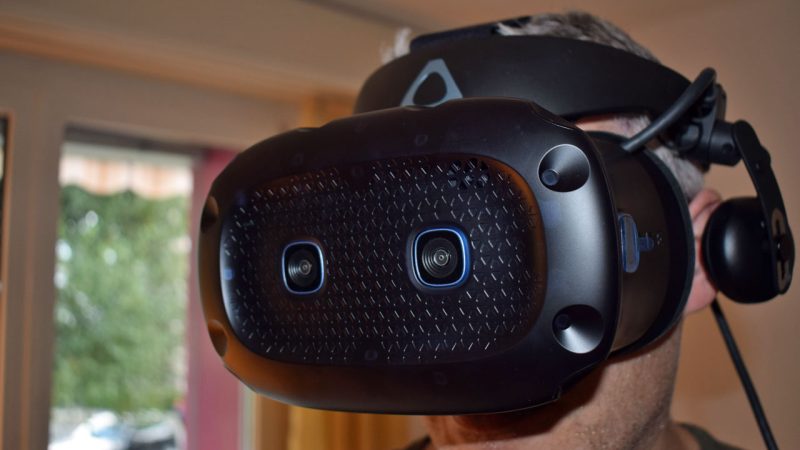HTC has already brought a whole series of VR headsets onto the market. The first HTC Vive, I even remember, was first shown in 2015 at the Mobile World Congress in cooperation with Valve's SteamVR project. I myself was still sceptical at the time, as the first developer version of the Oculus Rift was not yet able to captivate me in the "VR pre-era". At that time, in view of the immature motion detection and the still comparatively pixelated resolution, I still had too many doubts as to whether VR would ever gain momentum in the consumer sector. Until, shortly before the market launch of the HTC Vive and the Oculus CV1, I was allowed to try out the penultimate developer version of the HTC Vive at a press event in Zurich. I still remember very well how my jaw almost dropped back then during a pre-release version of "Arizona Sunshine": The novel position tracking in space with the Lighthouse base stations and the special pre-release controllers of the "Vive Wands" gave the gaming experience such a futuristic character that I knew from that moment on: "Oh yes, I have to have something like that", while someone from HTC whispered in my ear: "Yes, high-end PC gamers might want to have something like that."
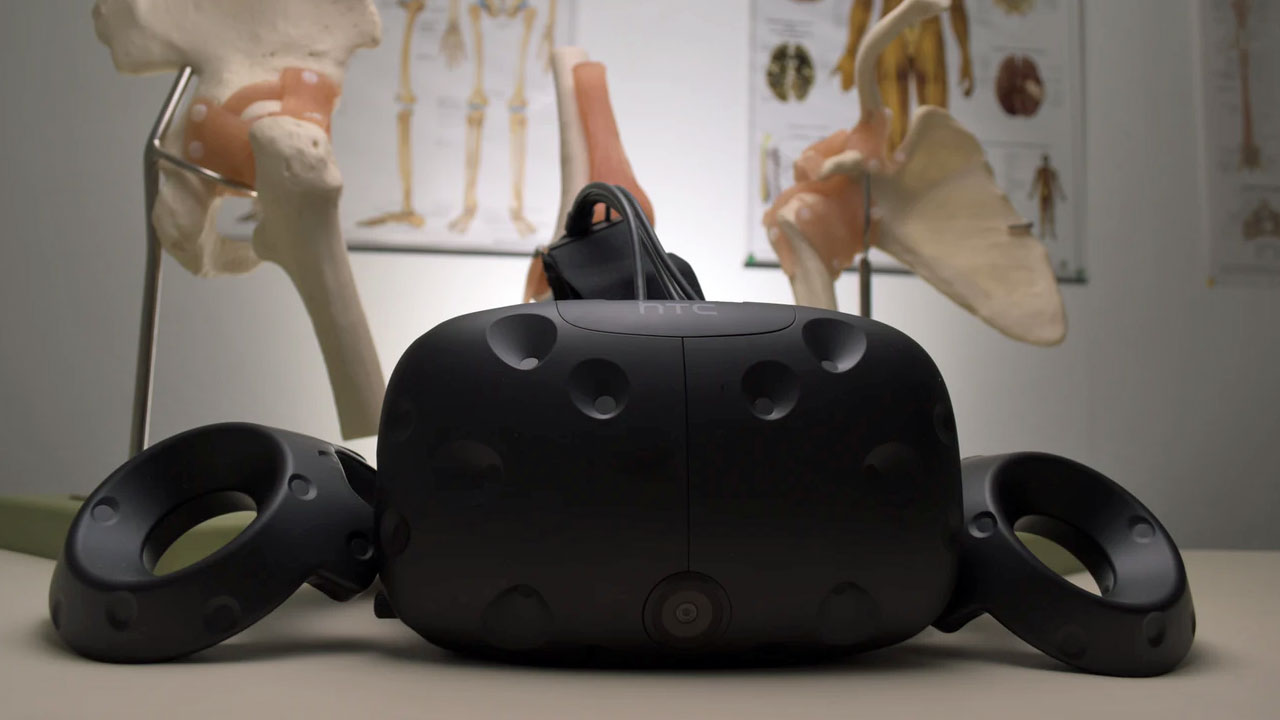
HTC Vive, HTC Vive Pro, HTC Vive Cosmos, HTC Vive Cosmos Elite ...
So the HTC Vive became my loyal VR companion for a very long time, starting in April 2016, directly after its market launch. A brief look back at VR history: The first HTC Vive had two OLED displays with 1080 × 1200 pixels each. Its successor, the Vive Pro, which was launched about two years later, offered a resolution of 1440 × 1600 pixels per eye. I remember noticing a much sharper resolution up close with the successor back then. However, I did not see a real reason for an upgrade because of this nuance. At the latest, when HTC announced a "semi-counterpart" to the Oculus Quest - with camera-based inside-out tracking - with the Vive Cosmos in September 2019, I at least already thought that these would be my next pair of glasses from HTC. With its very sharp and much brighter LCD-based resolution of 1440 × 1700 pixels per eye, the Cosmos did surprise me a lot at launch, despite its initial software bugs and light irritations during ambient sensing. The blue headset, which still costs around 800 Swiss francs today, is clearly superior to stand-alone all-in-one glasses such as the Oculus Quest (from 499) in terms of hardware power, but cannot compete in the overall spectrum, especially in the stability of the software, user guidance and the low level of support for the proprietary controllers.
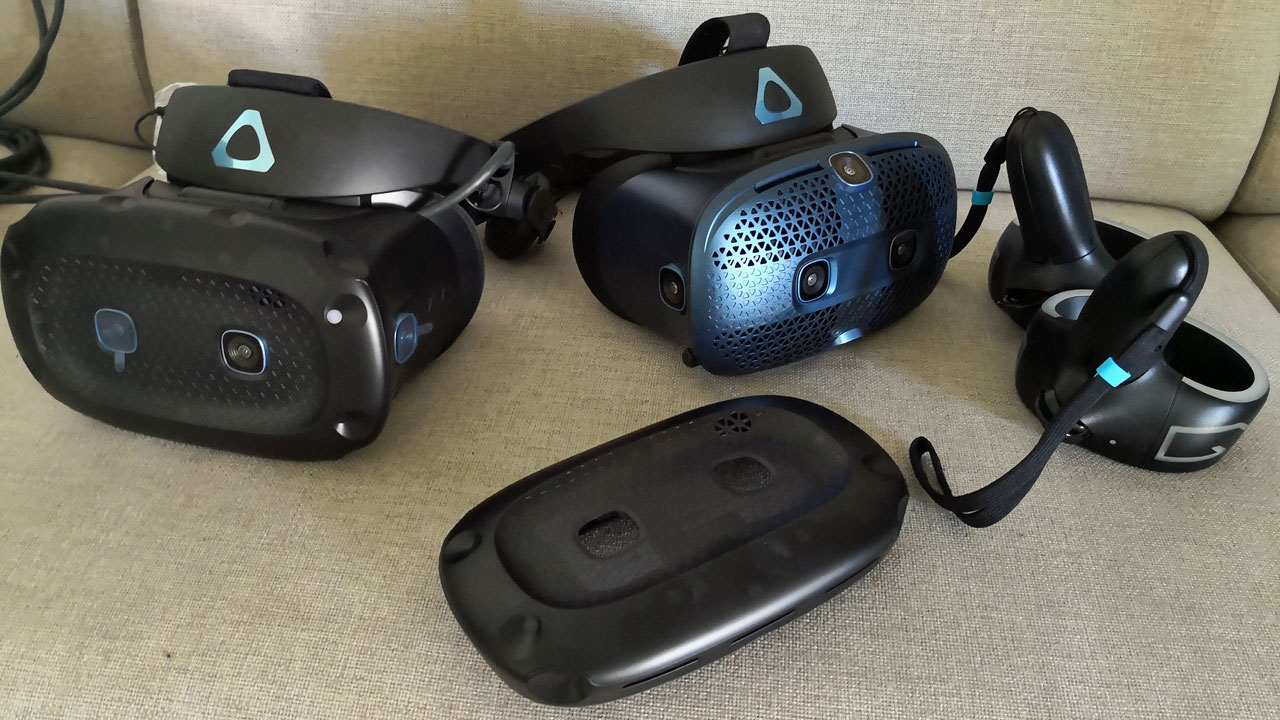
The error-prone camera tracking of the first Cosmos has improved a lot in the meantime, but I don't feel the predecessor of the Cosmos Elite with its clicky controller buttons is the first-best choice for frequent gamers. Fortunately, for enthusiasts who strive for precise motion tracking in space, HTC has quickly rectified the situation with a new model and also with the availability of a replaceable sensor faceplate. Owners of the Cosmos who already have the laser stations for the IR LED motion tracking of the corresponding control units (Valve Knuckles and Vive Wands) have been able to buy the "External Tracking Module" with the integrated modules for 230 francs for a few months. You then have a converted "Cosmos Elite", so to speak.
Why ship old hardware?
So here we are with the actual Vive Cosmos Elite, which you can either buy for 650 Swiss francs as a new black headset including the integrated external tracking faceplate or as a complete package including Lighthouse basestations and Vive controllers for a hefty 1100 Swiss francs if you don't yet own a Lighthouse tracking system and other accessories for other SteamVR glasses. In the case of the Basestations, you will only find version 1.0 Basestations in the elite complete package and not version 2.0, as can be purchased in a complete set with the Valve Index. However, the advantages for the private user are marginal: The newer version 2.0 laser stations trump with an extended horizontal Field of View, but also bring advantages if you have a large flat and want to set up a comfort VR gaming zone of up to 10 by 10 metres.

It is also incomprehensible that HTC still includes the old Vive controllers in this package. The new "Vive Wands", recognisable by their blue colour, were already included in complete kits for the HTC Vive Pro. When upgrading to the newer Lighthouse Basestations at a later date, these controllers will no longer work. In this case, you would have to get the 2018 clubs or the Valve Knuckles.
Otherwise, nothing has changed fundamentally compared to the setup procedure of the first HTC Vive. For all newcomers: You need a free zone of at least 1.5 by 2 metres and should either attach the base stations to two large photo tripods or fix them using the wall mounting sets supplied. So far, I have always used two Dörr camera tripods and achieved the best tracking results with a diagonal placement of the two base stations.
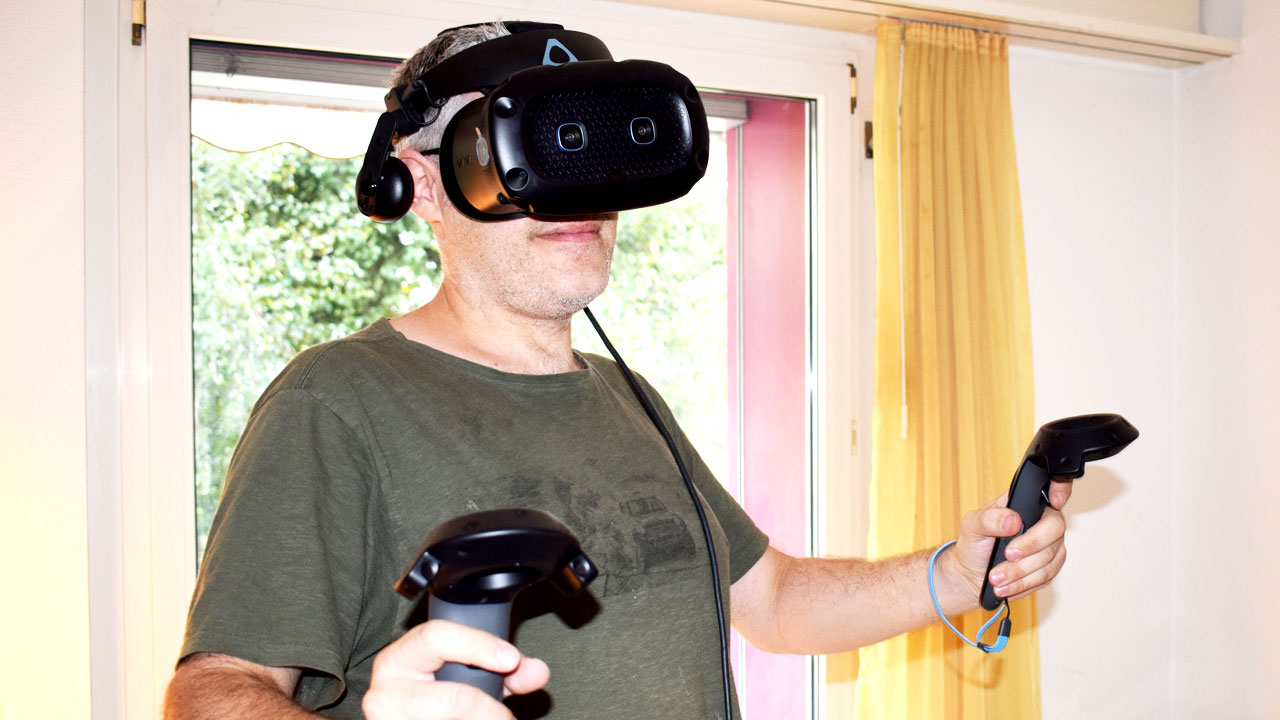
Only half the fun without a top PC
The headset is then connected to the PC via a cable bridge using USB 3.0 and DisplayPort 1.2, as usual. I would think that USB 2.0 would also work, at least it always worked for me with the Cosmos on an older computer. I tested it on a fast machine with an AMD Ryzen 3800X, 16 GB RAM and an RTX 2080 Ti. By the way, I consider the Minimum requirements of the Vive website as being quite outdated. To maintain reasonably smooth frame rates at the higher resolution and in newer games, I highly recommend investing in a decent graphics card.
So don't save on the graphics card if you're treating yourself to something new with regard to VR. The 3000 RTX cards will soon be on the market, which should give VR gamers in particular a significant performance boost for less money (than an expensive 2080 Ti). For the processor, choose a good 4- to 8-core processor from the faster AMD or Intel generation (such as Core i5 or Core i7 or AMD Ryzen 3X). But back to the installation: The Vive setup software takes a few minutes to iron on. Fortunately, everything was recognised immediately on my freshly installed Windows 10 gaming computer. This was not always the case, especially in the days of the "Vive Classic" and Vive Pro, which was probably due to software instabilities in earlier versions of the Vive drivers and SteamVR.
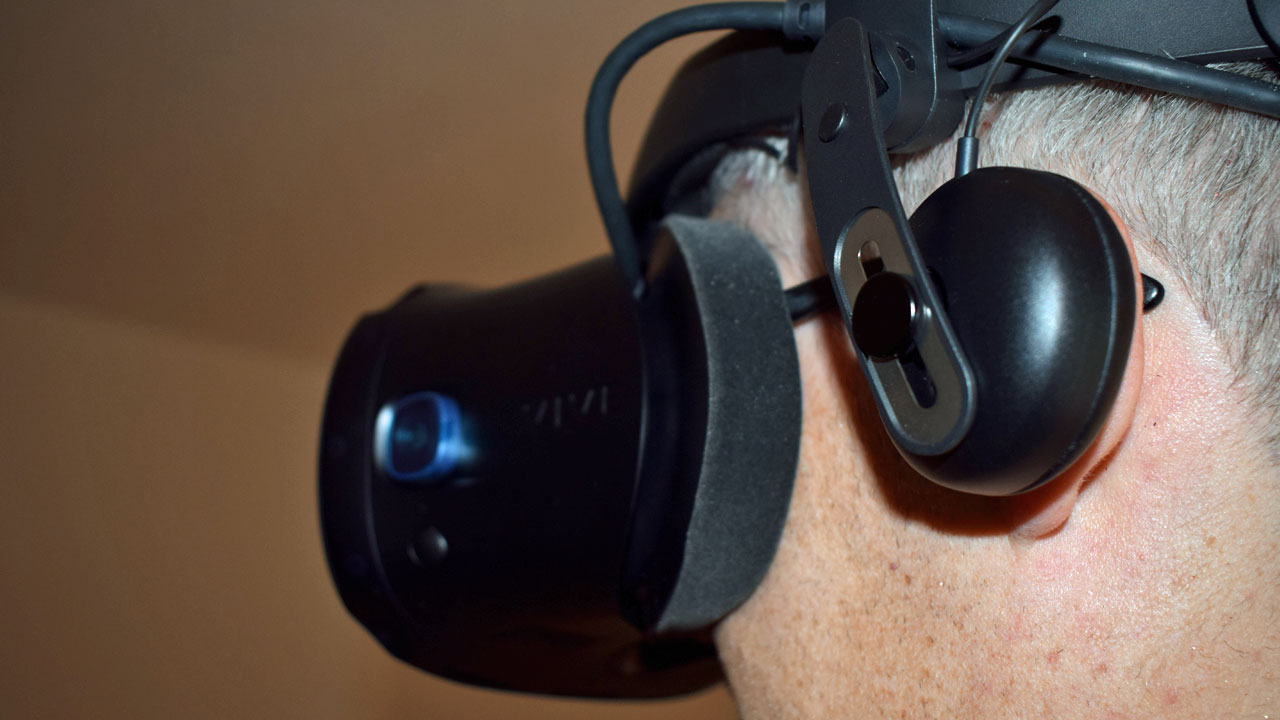
No fun without bass
In terms of comfort, the Cosmos (Elite) and the PSVR (Test for the PCtipp) are my favourite VR headsets to date. While many users prefer the well-cushioned Valve Index. Not all heads are the same. For example, I have a somewhat large eye relief. From a purely technical point of view, I like the Valve Index because of its adaptive frame rates of up to 144 Hz and I like to immerse myself in the full immersion with the excellent audio headset, but I feel more pressure points on my olfactory organ with my nose and forehead characteristics with the Index and unfortunately I cannot adjust my very large eye relief.
I can do that with the Cosmos Elite and generally feel less pressure on my nose and forehead. What I also like better about the Elite - compared to the Valve Index, Oculus Rift S and Quest: The image is much brighter and sharper due to the slightly higher resolution of 1440 × 1700 pixels compared to 1440 × 1600 pixels (Vive Pro). In addition, I find the so-called "God Rays" (glints of light on lenses) almost imperceptible compared to the Index.
Keyword audio: Since the Vive Pro, I have not made friends with the integrated earphones. The "Vive On Ears" are too quiet for me personally and don't have much punch in the high and low frequencies. All kinds of audio tweaks didn't help me. Fortunately, you can easily pull the quiet whisperers out of the head rail and connect standard headphones via a small 3.5 mm jack cable on the front.
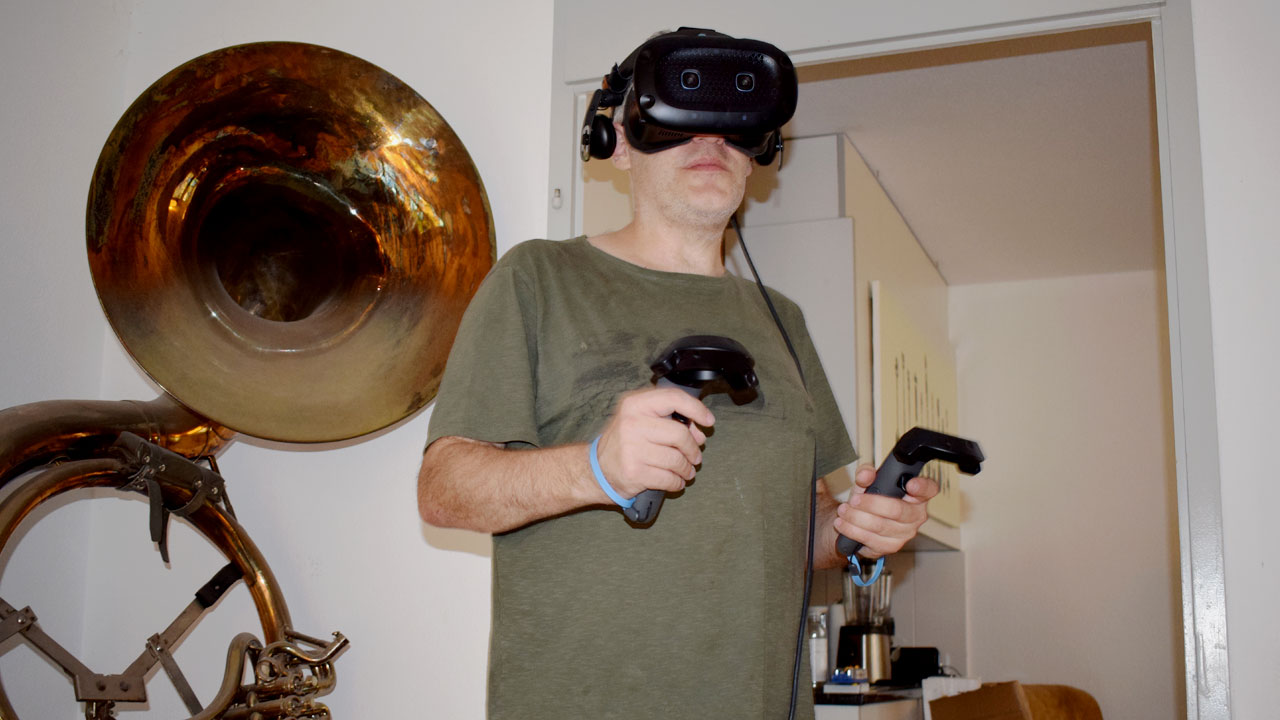
A headset for wide heads
But let's get down to the nitty-gritty: the gaming experience and, once again, the comfort: for me, the wearing comfort is similar to that of the Vive Pro: the headset can be attached to the head via the well-balanced plastic strap with its adjusting screw on the back. The "sweet spot", i.e. the area in which you can determine the vertical and horizontal "golden mean" of your individual focus, is unfortunately somewhat smaller than with the other PC VR glasses. Nevertheless, the image on the Vive Cosmos Elite is razor-sharp for me and the feeling of being in the middle of things is also achieved thanks to the light-proofing black foam padding. Even VR arcade classics like the Mechwarrior rail shooter "Archangel" give me a lot of pleasure again.
When I switch from the Valve Index to the Cosmos Elite, I immediately notice the sharp resolution of graphical VR treats like "Half Life: Alyx", as you can almost no longer see any pixels on the Elite. I'm still very curious to see how the HP Reverb G2 (with two 2K per eye) will perform, because for me, even with an abrupt switch from the Cosmos Elite to the Pimax 8K Plus with upscaled 8K, everything doesn't always seem sharper "at first glance". In my opinion, a "good VR image" always depends on several factors: essentially on the lens and display technology and on how well everything is matched in terms of brightness, luminescence and contrasts. With the Cosmos Elite, this balance is very good for me. By the way, a nice extra (as with some of the first Windows Mixed Reality glasses at the time) is the possibility of folding the front part upwards by 90 degrees at any time.
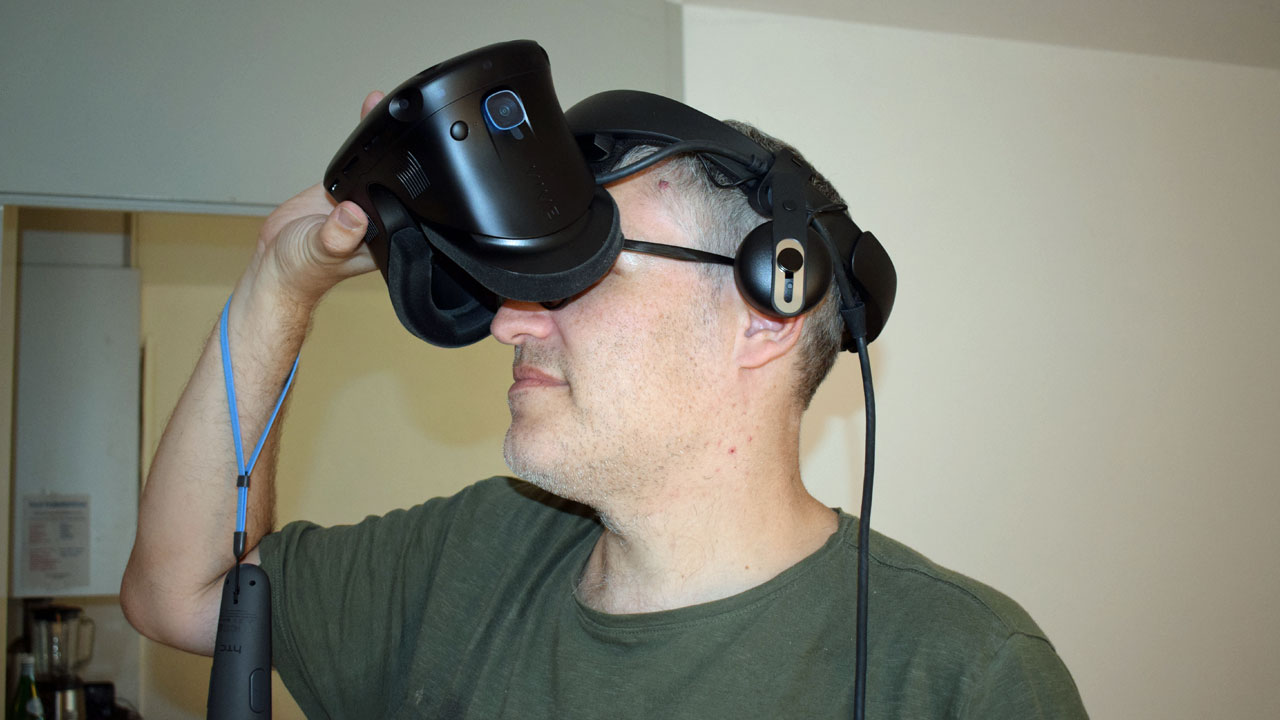
Technical finesse vs. comfort
The Index has a slightly higher field of view of 135 degrees (instead of 110). With the Valve glasses, I sometimes have the impression that the feeling of being in the middle of things is even more impressive, but you only really become aware of this with ultra high-end glasses such as a Pimax 8K Plus. However, the glasses from Shanghai are an enthusiast's headset with numerous software parameters, which are already disproportionately more expensive at a price of 1000 Swiss francs (without accessories). The higher refresh rate can be an advantage in some titles such as racing simulations or elaborately textured first-person adventures. I find the textures to be a little smoother and softer. However, I don't notice this at all in many games.
Wireless - yes!
Unlike other PC VR glasses, the Cosmos Elite (like the Vive Pro and the first HTC Vive) also allows wireless gaming via a wireless adapter with Intel's WiGig technology. In the VR sector, the VR wireless solution uses the 802.11ad standard, which enables up to 8 Gbit/s fast data traffic in the 60 GHz spectrum. Side note: I even remember well when Intel first announced "WiGig" six years ago at its then in-house exhibition in San Francisco. It was actually supposed to be the "eierlegende Wollmilchsau" for wireless docking stations. But it didn't quite get that far ...
But now to the 380-franc adapter: The set essentially contains a transmitter and a receiver as well as a WLAN PCI Express card to which you attach the radio module. To do this, you first have to open the PC and install the card in a PCI Express slot. However, this is not witchcraft. If you have never installed a card like this before, the Instructions on the Vive page. Once this is done, a cable is screwed to the transmitting radio module at the antenna output of the card. This module is then attached to the top of a monitor with a mounting bracket. To install the receiver on the headset, you must finally remove the inner padding of the Vive Cosmos Elite in order to replace the long stumbling cable with the shorter cable of the wireless receiver.
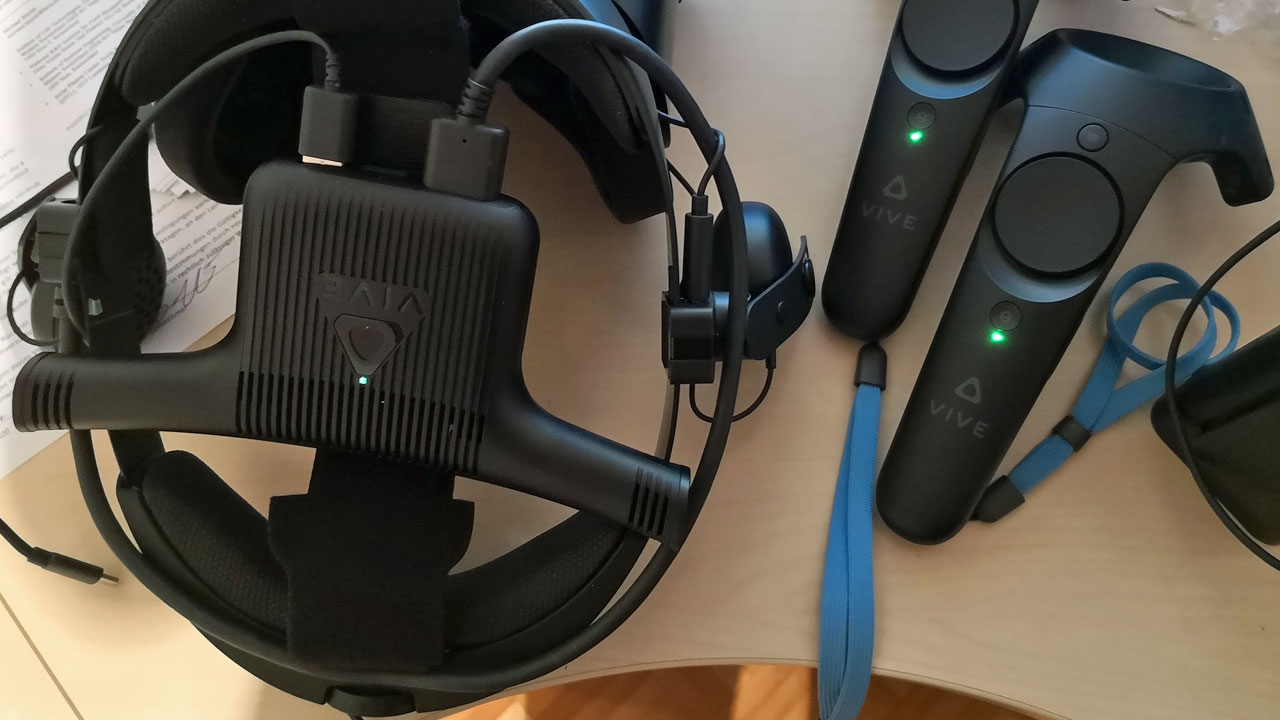
I was confused at first because the whole story is even designed for the old HTC Vive, as two different Velcro mounting kits are supplied for the receiver on the glasses with its left- and right-sided reception orientation. With the first HTC Vive, you have to sneak a different set of cables into the upper front panel recess for this. Once everything is set up, the software recognition runs quite quickly. The last step is to install the Vive WLAN app. This communicates between the PC and the Vive Cosmos Elite. The battery required for the receiver, which is recharged via USB, is best attached to the belt, which unfortunately doesn't always work so well in pyjama mode. The battery with a capacity of about 10500 mAh usually lasts a little more than two hours. For uninterrupted wireless gaming, a second battery pack is included.
My conclusion about the Vive wireless adapter: I have a lot of fun with the full freedom of movement at a high-end level. Despite the high price, I find the adapter to be a real added value. Finally, the fear of tripping over the annoying cables is a thing of the past. With a good WLAN AC router, the reception accuracy is very latency-free after all. In short, it's an upgrade that's worth it if you have a Vive Cosmos (Elite), a Vive Pro or a first-generation Vive and a fast Wi-Fi router. A cheaper alternative for wireless VR would be the variant with the mobile Oculus Quest. There, it works almost as well via sideload and a "streamer app". It will be exciting to see what the Oculus Quest 2 (from mid-October) has to offer in terms of image quality and optimised refresh rate, because with the much cheaper successor model for only CHF 399 (64 GB version) and 90 Hz, a Rift (S) is no longer necessary.
Conclusion
ConclusionPROS
- Very bright and sharp image (better than Vive Pro)
- Large interpupillary distance up to 72 mm (IPD) possible
- Convenient equipment with "pop-up" mechanism
- Upgrade option for wireless operation (for 380 Swiss francs)
- Half a year of Vive Port Infinity for free
CONTRA
- Too quiet audio headset with little bass and dynamics
- First generation Vive Wands and Lighthouse Basestations
- Small sweet spot, lower FOV than Valve Index





